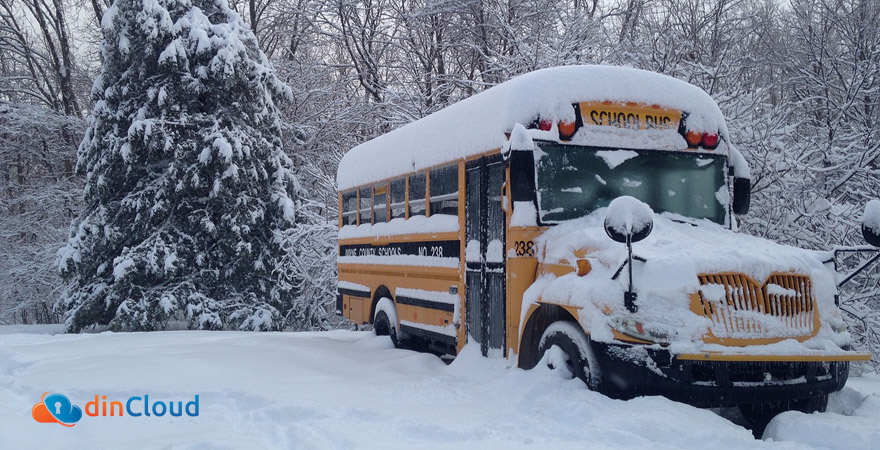How one School District applied a digital solution to Mother Nature.
As yet another snowstorm bears down on the Midwest and all children eagerly anticipate a snow day, educators in Indiana have devised a solution that can keep the learning going, even if students and educators cannot physically get to the classroom.
E-learning is nothing new for higher education, and even K-12 educators have dabbled in the technology (think K12.com). But advances in cloud technologies like hosted workspaces and desktop-as-a-service have the potential to make snow days a thing of the past.

The Problem
For a large portion of the country, Snow Days are just a part of life, but they can create problems for administrators and teachers alike. Where snow days are common, districts have built those into the school calendar, however, many schools are required to make them up in the spring. But many states have required standardized tests, and those dates are typically in March or April. If schools are closed, then students miss out on receiving all of the vital information needed to perform well on these tests. What’s a school supposed to do?
The Solution
Six years ago, districts in Indiana faced this very issue. After a brutal winter where schools were closed for ten days, the Department of Education devised a plan. Districts implemented e-learning management systems, allowing school to continue even in severe weather. Some districts have even applied the solution during teacher learning days and parent-teacher conferences, reducing the number of days students are out of school.
Districts in Indiana are required to apply for state approval before they can implement an e-learning solution, and all applications are evaluated against nine criteria. These include student access to the internet away from school, student and parental ability to reach the teacher and appropriate materials for students with special needs.
What does all this have to do with Desktop-As-A-Service (DaaS)?
Cloud solutions such as desktop-as-a-service can be a vital component in K-12 schools ability to implement this type of e-learning set up for several reasons. We will explore a few of those reasons.
Schools Can Utilize Equipment Already Procured
Yes, that’s right. Schools and educators can use the very same computing equipment they already have. There is no need to purchase expensive, new equipment. In fact, DaaS can increase the lifespan of the districts current equipment as all of the computing processing load is carried by the service providers equipment. By implementing a DaaS solution, districts can not only ensure that school is still in session during inclement weather but also save money. The reduction in capital expenditure can allow those funds to be used in other areas, such as increasing technology in the classrooms.
All Sensitive Information Remains Secure
Not only does DaaS (Desktop-as-a-Service) reduce the complexity of implementing a virtual classroom during inclement weather, but it also increases the security of the facilities data. When staff needs to access lesson plans and other documents to communicate this information to parents and students, none of those plans or information lives on the teacher’s system. Cloud solution providers are held to a higher standard of security protocols, as well as best practices to avoid breaches.

How can you get started?
Looking back to Indiana, Director of Communications for the Indiana Department of Education described an additional benefit to helping schools provide e-learning to their students to avoid missing school during inclement weather – the ability to experience a virtual classroom before graduation and college. The future of education is digital, and the earlier students are exposed, the better. DaaS can aid districts by reducing the complexity and ensuring teachers have access to their lesson plans. Speak with a dinCloud Cloud Specialist today and learn more about how DaaS can be an asset to your district.


